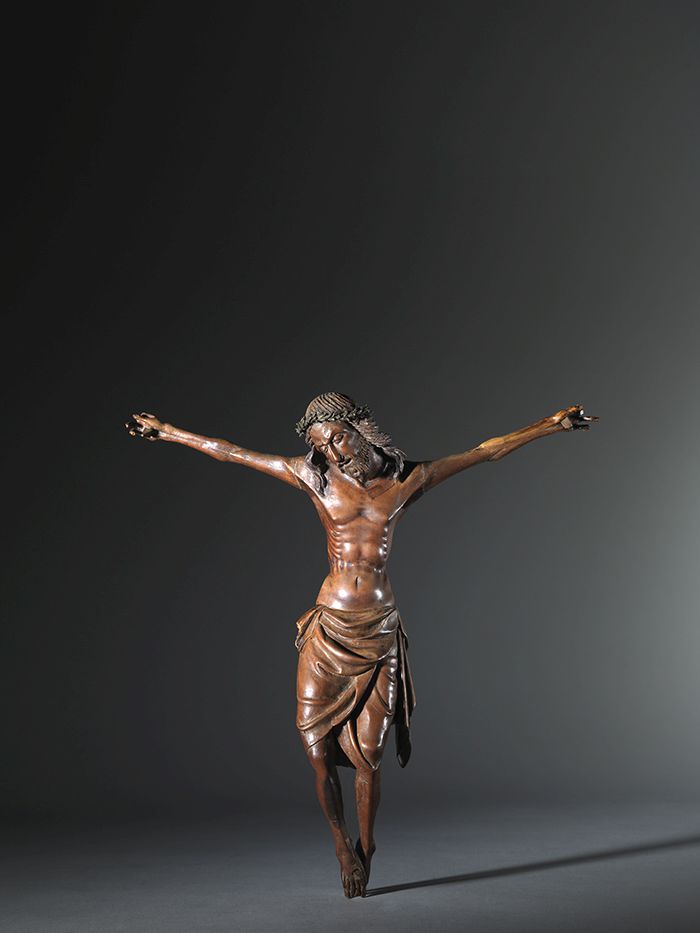Austrian or German Crucifix
 This exquisitely detailed corpus carved in fruitwood is difficult to localize, and the suggestion that it is from Venice is not the only possibility. Indeed, the style that it exemplifies, which reached its zenith around 1400, was called the International Style because it flourished in various regions of Europe, was practiced by artists of different nationalities, and often involved masters who established their practice far from their native lands. Here the medium suggests an Austrian or German master, who could have been working in Northern Italy or elsewhere as easily as in German-speaking Europe. The pronounced S-curve of Christ’s body on the cross, rather than the new type of a straighter body, suggests a conservative artistic center. The body could have been painted naturalistically, or left natural or stained wood; this may have been a model for a goldsmith or silversmith. The survival rates for objects in precious metal are very low, and cases where both the model and finished object have come down to us nearly nonexistent, making it difficult to compare this corpus with ones that may have been like it.
This exquisitely detailed corpus carved in fruitwood is difficult to localize, and the suggestion that it is from Venice is not the only possibility. Indeed, the style that it exemplifies, which reached its zenith around 1400, was called the International Style because it flourished in various regions of Europe, was practiced by artists of different nationalities, and often involved masters who established their practice far from their native lands. Here the medium suggests an Austrian or German master, who could have been working in Northern Italy or elsewhere as easily as in German-speaking Europe. The pronounced S-curve of Christ’s body on the cross, rather than the new type of a straighter body, suggests a conservative artistic center. The body could have been painted naturalistically, or left natural or stained wood; this may have been a model for a goldsmith or silversmith. The survival rates for objects in precious metal are very low, and cases where both the model and finished object have come down to us nearly nonexistent, making it difficult to compare this corpus with ones that may have been like it.
The International Style was the last, highly refined expression of the Gothic style that had begun in France in the twelfth century. It flourished in court contexts–Paris, cities like Dijon in the Duchy of Burgundy, Prague–where precious materials and finely painted or wrought objects were appreciated. This manifestation of the Gothic coexisted with the early Renaissance style in Florence, where some collectors preferred retardataire North Italian court artists (Pisanello or Gentile da Fabriano) while other patrons turned to artists who were forging the Early Renaissance style (Masaccio, Fra Angelico); similar polarities existed in the sculptural domain, where both Ghiberti and Donatello found clients. This corpus enhances our holdings in the art of this privileged era for artistic production, from which we already own a Sienese chalice (ca. 1350–75) and a predella panel by the Florentine Lorenzo Monaco (1370–1425). In this case, however, we may never be able to specify an artist, a nationality, or a precise location where the impressive and moving figure was made.